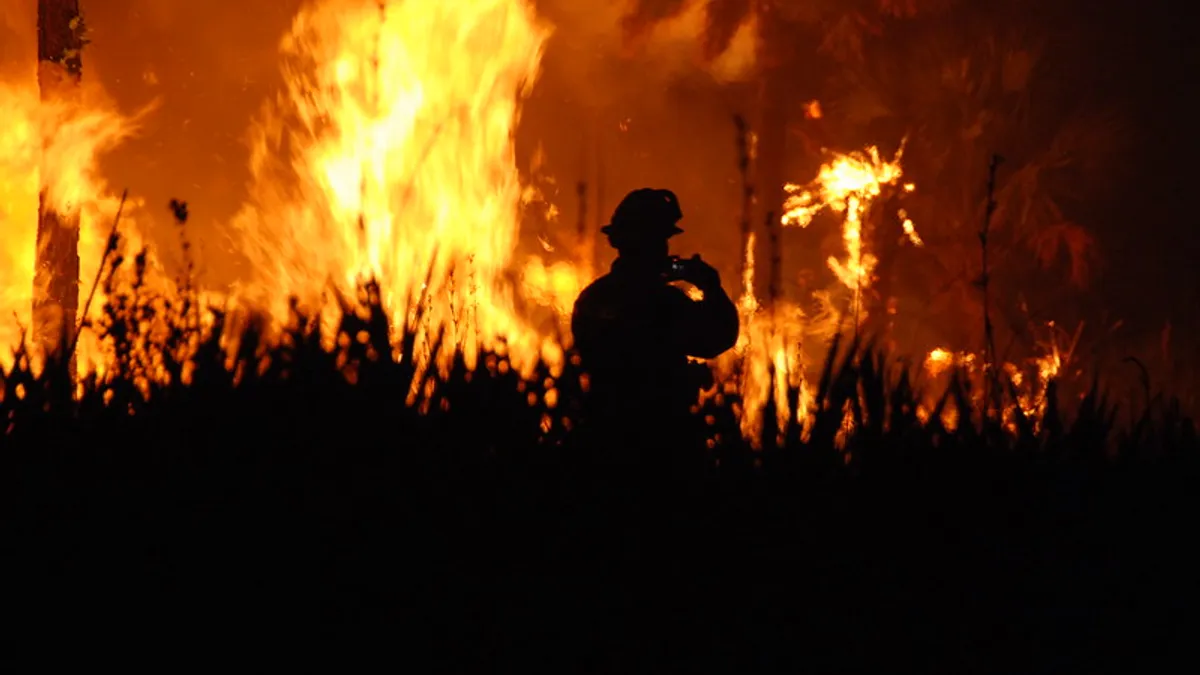Dive Brief:
- California regulators on Thursday gave Pacific Gas & Electric (PG&E) an initial green light to securitize $7.5 billion in costs related to a series of wildfires that occurred in its service territory in 2017, despite concerns from some groups about the impact to the utility's customers.
- If regulators similarly approve a financing order slated for a vote next month, PG&E can issue up to $7.5 billion of recovery bonds, which will result in a ratepayer charge of more than $394 million per year for the next 30 years. PG&E intends to reimburse customers through a shareholder-funded trust, but some groups are skeptical of that strategy.
- The securitization stems from the "stress test" process, adopted by California lawmakers before PG&E filed for bankruptcy in early 2019, which essentially allows the CPUC to consider a utility's financial position in deciding the amount of wildfire costs it can bear without harming ratepayers.
Dive Insight:
PG&E last year filed an application with the California Public Utilities Commission (CPUC) seeking authority to recover the $7.5 billion in wildfire costs by issuing ratepayer-backed bonds.
According to PG&E, securitizing the costs would allow it to retire $6 billion of debt and accelerate compensation promised to fire victims as part of its bankruptcy reorganization plan. The CPUC decision directs the utility to establish a "customer credit trust" to reimburse ratepayers, which shareholders would fund with $1 billion in 2021, $1 billion before March 31, 2024, and nearly $7.6 billion down the line.
That last requirement, however, has drawn concerns from ratepayer advocates. PG&E intends to get the money from certain shareholder-owned tax deductions or net operating losses. But consumer advocate The Utility Reform Network (TURN) has pointed out that the utility's most recent 10-K filing with the Securities and Exchange Commission states its ability to tap into those net operating loss carryforwards could be limited — although PG&E does not think it will face that issue.
CPUC President Marybel Batjer pointed to the shareholder contributions to the customer credit trust, as well as the possibility of requiring PG&E to contribute up to $775 million more in 2040, as offsetting the ratepayer charge.
"Based on these requirements, I believe the decision before us today meets the requirements of the stress test, maintains ratepayer neutrality, and will help further put PG&E on a path to enhance financial stability, which can provide lower costs to the customers than without the securitization," Batjer said.
TURN isn't opposed to securitizing the wildfire costs, since that strategy allows for lower interest rates than going to the private market for financing, the group's Executive Director Mark Toney said. But the only way this proposal will be "rate neutral" is if there is an iron-clad guarantee that shareholders will compensate ratepayers, he said.
"The only guarantee [here] is the ratepayers have to pay regardless. That's the problem there in a nutshell," Toney said.
TURN has conducted modeling that indicates there is a 40% chance that the shareholder-funded trust will face a shortfall, compared to PG&E's estimate of 16%, in which case ratepayers will be saddled with an average of nearly $2 billion, per the group's estimates.
"No matter who you believe, it's not a zero chance," Toney said. "We want that to be brought to zero by a guarantee."
PG&E appreciates the approval of the securitization, which is intended to save customers money by improving its creditworthiness, utility spokesperson James Noonan said in an emailed statement.















